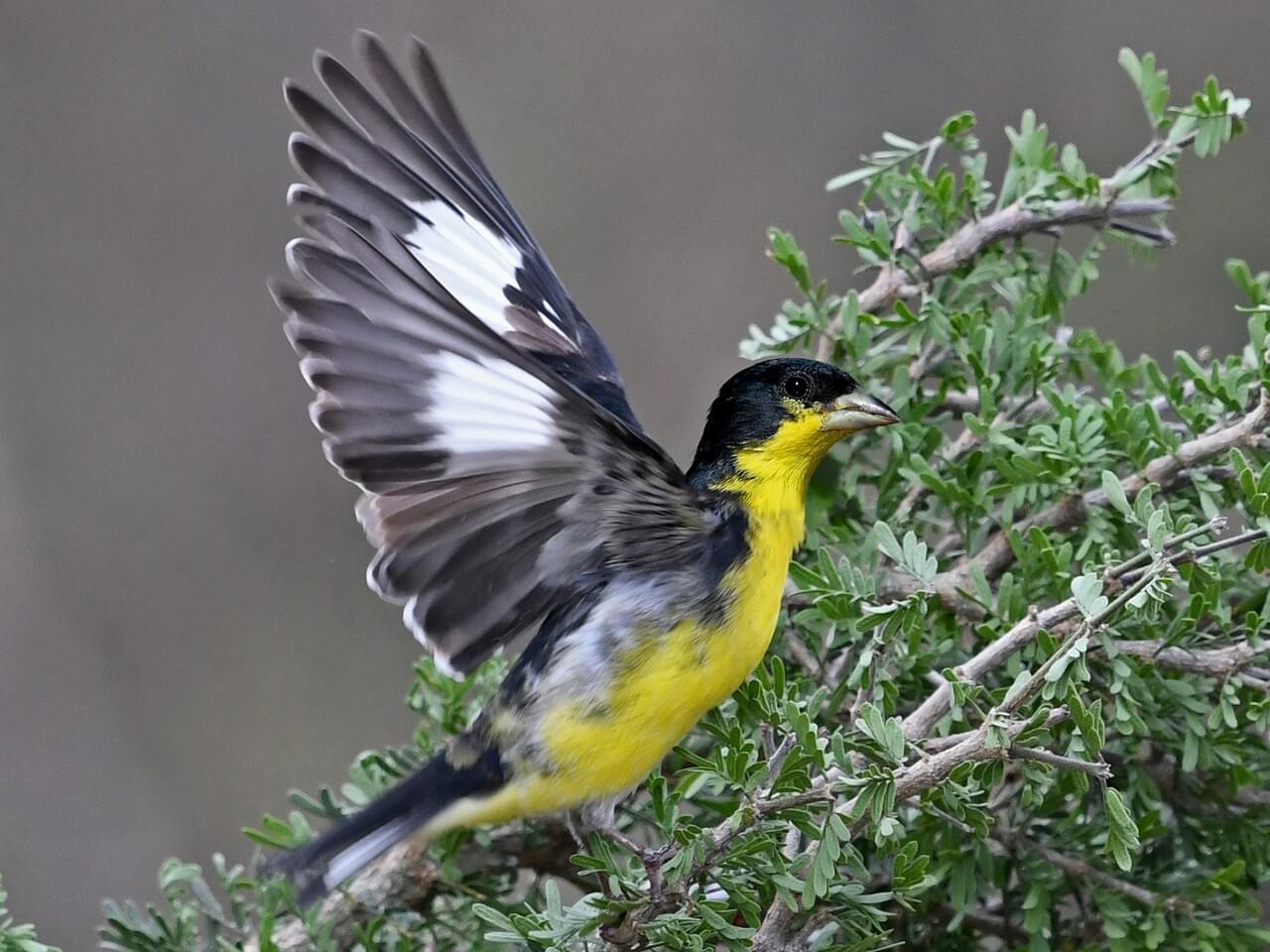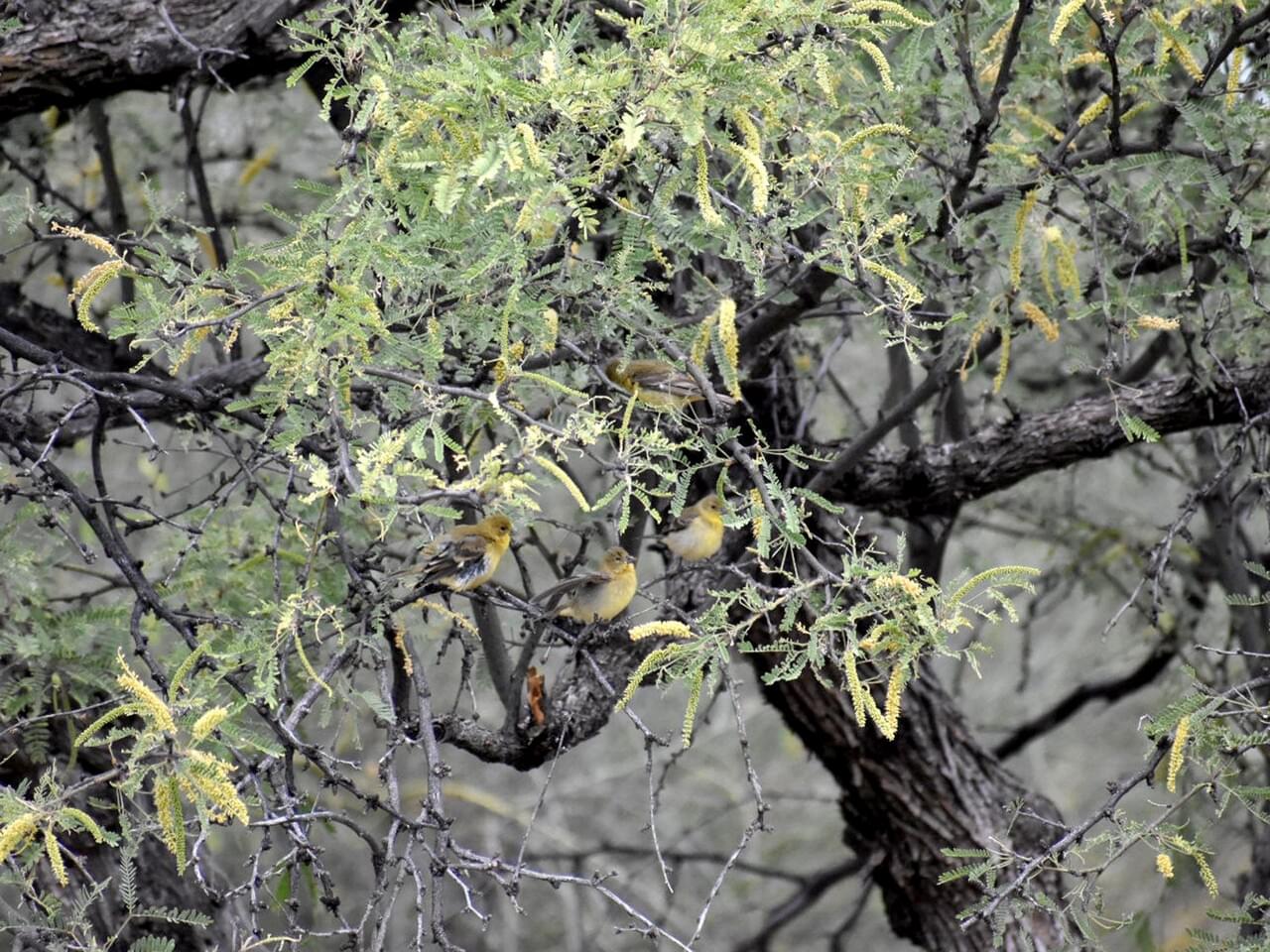Lesser Goldfinch
Lesser Goldfinch
(Spinus psaltria)


Lesser Goldfinch nest
Photo © René Corado

Lesser Goldfinch eggs
Photo © René Corado
Song
© Bob Hasenick / Macaulay Library
Song
© Jay McGowan / Macaulay Library
Calls
© Nathan Pieplow
Calls
© Parker Davis / Macaulay Library
Calls
© Bruce Rideout / Macaulay Library
Juvenile calls
© Walter A. Thurber / Macaulay Library
Flight calls
© Paul Marvin / Macaulay Library
Where To Find It

Source: Birds of the World
Habitats
Substrates
What You'll Find
Nest Type
Chick
Clutch Size
2
6
Nest Height
45 ft
4 ft
Nesting Statistics
Incubation Period
12-13
days
days
Brooding Period
11-14
days
days
Useful Hints
- Lesser Goldfinches are often found in suburban habitats, like parks and gardens.
- The nest is usually in a twig fork of a tree, mostly hidden by foliage or lichens.
- The female, which builds most of the nest without help from the male, begins by collecting plant materials with her beak. The materials can include leaves, bark, catkins, yucca fibers, cocoons and spiderwebs. Sometimes she strips branches of their fibers, holding them with her feet.












